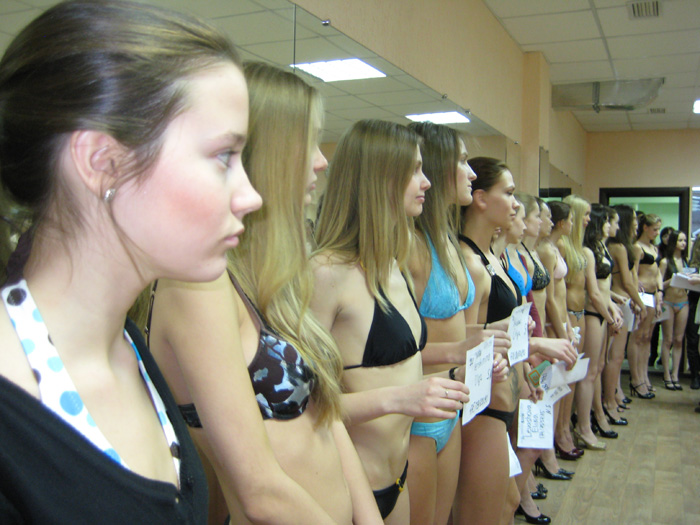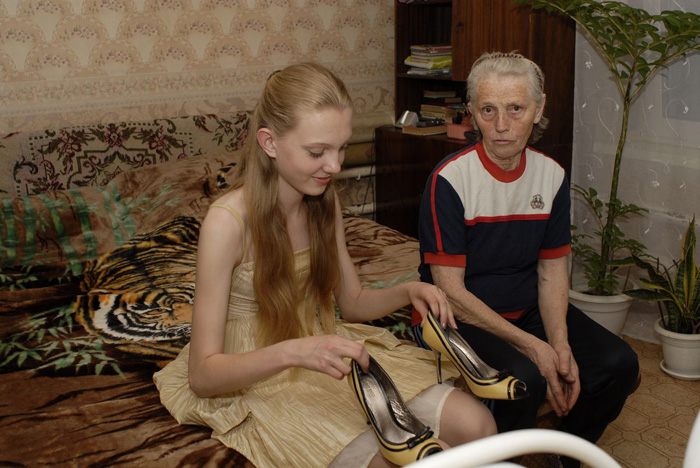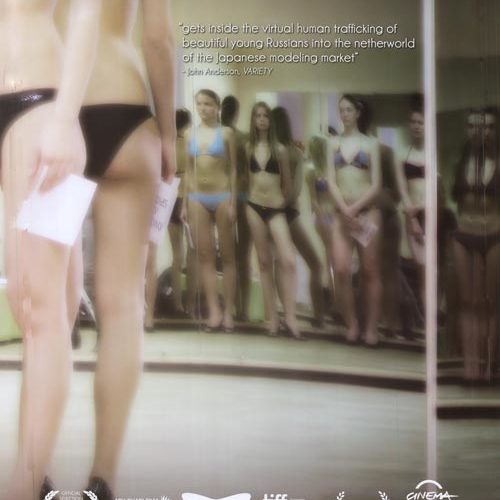Documentaries find success through compelling stories. Whether a salacious expose on an industry many looking in don’t understand or a stirring rags-to-riches tale depicting a young girl’s rise to fame and fortune—intrigue is the name of the game. Many times directors aren’t even sure what their film will be until everything plays out and the editing process begins. For David Redmon and Ashley Sabin, the simple fact their Girl Model delves into the scary reality of thirteen-year old girls being taken advantage of with the hope to help themselves and their family means controversy is bound to rear its head.

Pitched by the cautiously critical talent scout at its center, Ashley Arbaugh, the film’s genesis begins within the industry. A former model in Japan at 18—shown via autobiographical diary-like footage from 1999—Ashley doesn’t love her job yet continues to stick with it. Often censoring herself from saying too much or becoming overly cavalier about the work that affords her gorgeous Connecticut house and freedom from the 9-5 cubicle life she would like to avoid, there is definite trepidation in her actions. Working with men like Noah Models owner Tigran keeps her going because maybe they can make a difference in the lives of the girls they send west. Some people still care about these impressionable teens’ wellbeing and refuse to simply treat them like cash cows to cut loose when their waists grow a centimeter larger.
Arbaugh candidly explains the harsh realities of a life she loathed, deciding instead to become a facilitator for those who didn’t. Understanding the difficulty of policing her handlers and getting compensated for her work, the move to talent scout was a logical progression as the money and travel remained alongside the added sense of control. What’s interesting, though, is how she is able to put innocent girls into the same impossible situation. Because as Redmon and Sabin show Ashley’s pursuit of a stronger business-like approach to the job against her almost juvenile sense of self inside an empty upscale home with two baby dolls jokingly mentioned as having been bought to fill it, they also follow her newest discovery Nadya and the tough conditions she endures. Besides their fifteen-year age difference, the two are stunningly similar.

What Nadya Vall must go through is a roller coaster ride I’m glad to never have had the chance of experiencing. A celebrity in her Serbian hometown after winning the chance to work for the Switch Agency in Tokyo, she’s shipped off with nothing but an address and translation dictionary. And while documentarians generally like to remain flies on the wall, one can’t begrudge their decision to help get her to the cramped, one-room apartment she’ll share with Russian-transplant Madlen or to use their phone for a long-distance call home. Casting sessions occur daily and despite being photographed, no one gets paid unless it’s known the images were sold. Unlike her roommate, Nadya’s family’s situation doesn’t allow her to possess a credit card for expenses so she must borrow for food while tearfully waiting until she can leave it all behind.
Or at least that’s what we hope. It isn’t spoiling anything to say that Nadya continues working in the industry today despite her problematic first journey abroad. For this self-described “gray mouse”, modeling is all she has known since age five. Her mother set her on this path too long ago—she can’t just give up. But as the film shows, not even Ashley can find the strength to let it go after verbally admitting her disdain. Arbaugh realizes the system is broken, knows the tapes she helps make end up in the wrong hands, and acknowledges the fall towards prostitution isn’t far once a girl begins to see her beauty bought and sold. The women filmed have been groomed for this; their attractiveness breeding wealth and their bodies the children to continue the cycle.

Girl Model gives us a unique perspective from all angles of the Siberian-Japanese pipeline used for girls to dream their way into America. We see the insane contracts with clauses for daily changes; the terms not allowing waist, chest, or butt growth; and the flimsiness of so-called guarantees ending in debt repaid by subsequent stints in our markets. Some never get a job (Madlen), some find success (Ashley), and others sit in-between like 23-year old Rachel Blais still working the Japan circuit during filming. The motivations of men like Switch’s Messiah are alluded to being insincere while those like Tigran sympathetically try to help. One exists because the other pushes back and it’s proven that modeling is going nowhere and the companies pawning 13-year olds off as 16 or 17 will continue to reap the rewards.
Was the tale cut to expose a dark underbelly of deceit and amoral activity? Maybe, but nothing here really shows criminal negligence or unwilling participants being thrust into life-threatening situations. Nadya has even recently filmed a monologue—obviously read from a prepared statement—uploaded to YouTube by her agency denouncing the film and its creators with hateful rhetoric—something I find hard to believe isn’t coerced. I’m sure Redmon and Sabin took liberties with the footage in order to make a palatable film for audiences, but I believe the reality lives in between these two versions. Film like all art is told subjectively from an artist’s viewpoint and should always be taken with a grain of salt. Girl Model did begin through an insider’s perspective, though, so I have to believe Arbaugh’s inclusion means it comes pretty close to the truth.
Girl Model hits limited release on September 5th.

